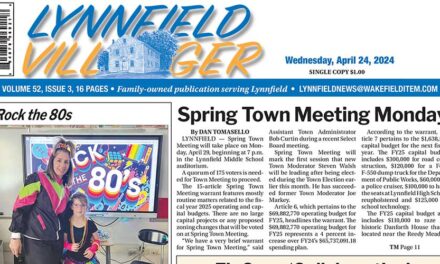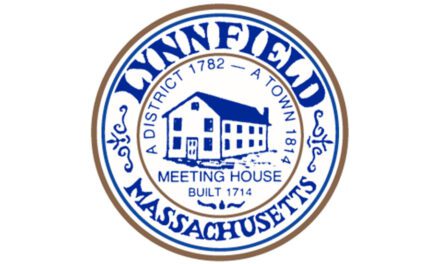Published December 5, 2018
By DAN TOMASELLO
LYNNFIELD — The Lynnfield Center Water District will be holding a special district meeting on Monday, Dec. 10, beginning at 7 p.m. in the Lynnfield Middle School cafeteria.
The LCWD Board of Water Commissioners scheduled the special meeting in order to ask ratepayers to approve the $5.25 million greensand filter treatment plant project as well as allocate $250,000 for the purpose of conducting a supplemental water supply study. Three citizens’ petitions will also be appearing on the warrant.
While Town Meeting has a quorum requirement, there is no quorum requirement for the special district meeting. The meeting is only open to LCWD ratepayers.
The warrant will include five articles, including one that will request ratepayers to choose a moderator for the meeting.
The water commissioners submitted Article 2, which will ask ratepayers to approve the $5.25 million greensand filter treatment for the Glen Drive well field. The Glen Drive well field provides 40 percent of the district’s drinking water.
The project would address the discolored water problems that have been plaguing residents living in the Apple Hill Lane, Chestnut Street, Cortland Lane and Lowell Street areas of town. The water district has attributed the discolored water to iron and manganese.
“This proposal is the result of an extensive process and is a solution we believe will result in better service for every one of the residents we serve,” said LCWD Superintendent/Water Commissioner Ken Burnham in a statement. “However, it is by no means the end of our work to secure clean, reliable water for the district for years to come.”
If ratepayers approve the greensand filter plant project, LCWD officials anticipate the plant will be up and running in 2020.
CDM Smith civil engineer Carol Rego recently said if the problem does not get addressed, manganese will spread throughout the district and more residents will have discolored water.
“It will affect more areas as time goes on,” said Rego. “The plant would be designed to handle increased levels of manganese.”
Article 2 also seeks to appropriate $250,000 in order to conduct a study on supplementing the district’s water supply via the MWRA from the Lynnfield Water District or from neighboring towns such as Andover, North Reading, Reading and Wakefield.
Reading and Wakefield water comes from the MWRA. Andover gets its water from the Merrimack River. North Reading buys most of its water from Andover, supplemented by its own well water. In the next few years, North Reading will shut down its wells and will buy all of its water from Andover.
The additional water sources could help alleviate watering bans during the summer that have frustrated a number of residents. According to Article 2, the LCWD has been working with the Massachusetts Department of Environmental Protection in order to “minimize water restrictions imposed on ratepayers.”
“The funding source for this project would be from debt, potentially through low-interest state loans, specific to this type of project and modest rate increases to (LCWD) customers,” reads Article 2. “Rate increases would be based on a new rate structure, which increases with higher consumption.”
Citizens’ petitions
In the wake of several residents expressing frustration that the water commissioners grouped the two different components into Article 2, two residents have filed three citizens’ petitions in order to give ratepayers alternative proposals to consider.
Wymon Way resident Rob Almy, who served as the manager of the Santa Barbara County Water Agency from 1990 through 2008, submitted Articles 3 and 4.
Article 3 seeks to separate the feasibility study from the warrant article submitted by the water commissioners. The proposal involves appropriating $250,000 for the purpose of conducting a study on supplemental water supplies for the LCWD. The supplemental water sources could come from neighboring towns or the MWRA via the Lynnfield Water District.
“Such evaluation to include capacity studies on the Lynnfield Water District system and evaluation of water quality compatibility issues,” reads Article 3. “(The) appropriation may be used to defray district costs incurred by one or more adjacent water districts whose systems are included in the capacity studies. The results of such evaluations shall take the form of a formal report to the district and shall be available for public review in draft form for at least 60 days before being made final.”
Article 4 seeks to appropriate $200,000 in order to “evaluate iron and manganese treatment” at the Glen Drive well field. The proposal will have the LCWD perform “a feasibility study and preliminary design for a filtration or other treatment system for the removal of iron and manganese from water produced from the Glen Drive well field.”
“Such valuation and design to include cost estimates and proposed funding mechanisms for the recommended design,” reads Article 4. “The results of such evaluations shall take the form of a formal report to the district and shall be available for public review in draft form for at least 60 days before being made final.”
Russet Lane resident Stephanie Rauseo submitted Article 5, which will request ratepayers to vote on giving “a mandate to (LCWD) commissioners to study and report additional sources of water to replace the existing water supply or supplement the existing water supply.”
“The objective of this warrant (article) is to understand options to increase the water supply and quality available to (LCWD) customers,” reads Article 5. “The plan is to source all (LCWD) water through MWRA directly or to source MWRA water through the Lynnfield Water District or from surrounding communities.”
Similar to Article 2 and Article 3, Article 5’s projected cost totals $250,000. Additionally, the warrant article will mandate that the LCWD give a detailed report on the proposed project at the regular meeting on April 8, 2019.
“A yes vote on this article will provide funding to study additional water sources to the district’s water quantity and quality without spending $5.25 million before (ratepayers) really have a cohesive plan to solve all our water problems,” reads Article 5.




